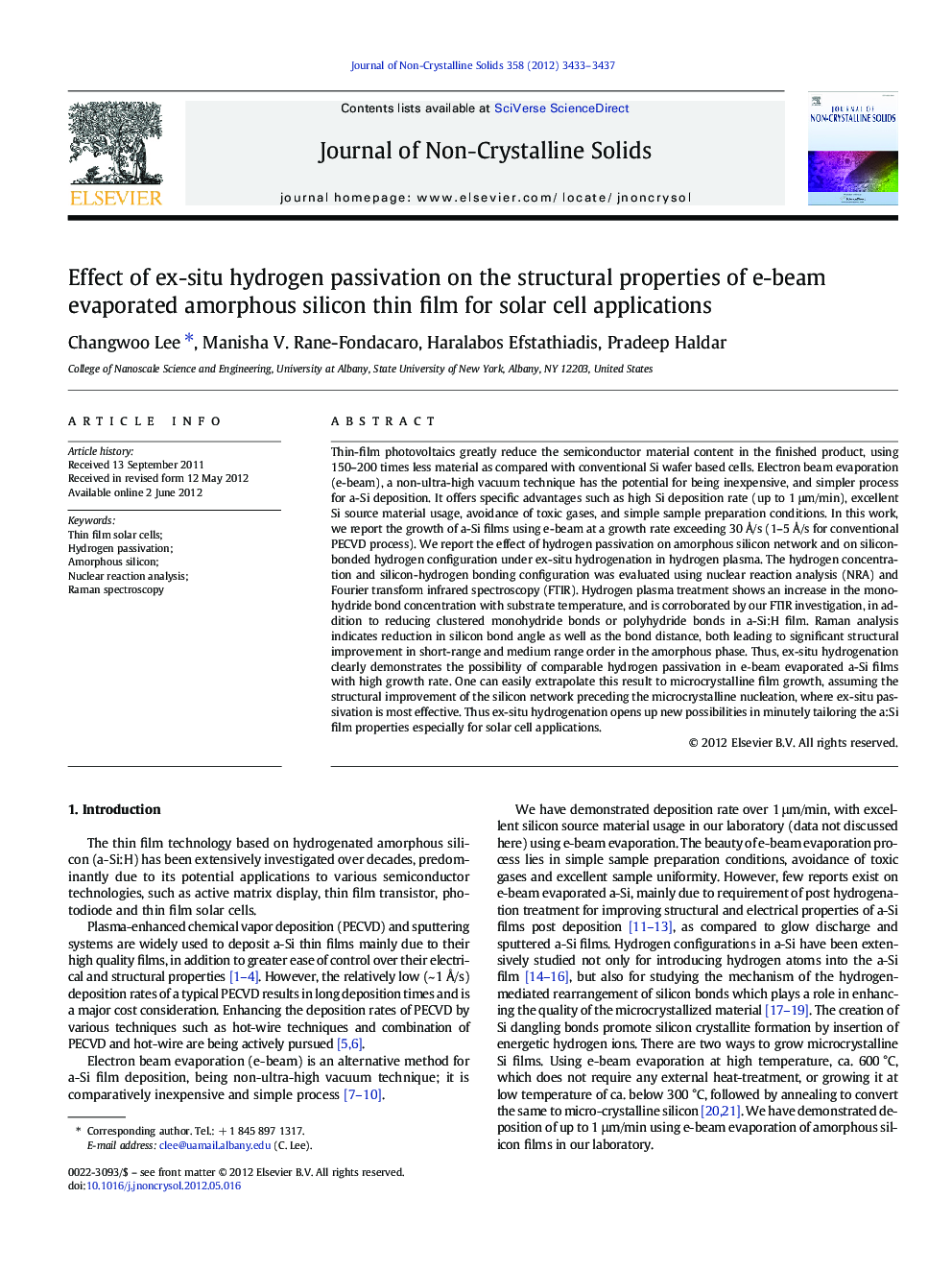| کد مقاله | کد نشریه | سال انتشار | مقاله انگلیسی | نسخه تمام متن |
|---|---|---|---|---|
| 1481488 | 991530 | 2012 | 5 صفحه PDF | دانلود رایگان |

Thin-film photovoltaics greatly reduce the semiconductor material content in the finished product, using 150–200 times less material as compared with conventional Si wafer based cells. Electron beam evaporation (e-beam), a non-ultra-high vacuum technique has the potential for being inexpensive, and simpler process for a-Si deposition. It offers specific advantages such as high Si deposition rate (up to 1 μm/min), excellent Si source material usage, avoidance of toxic gases, and simple sample preparation conditions. In this work, we report the growth of a-Si films using e-beam at a growth rate exceeding 30 Å/s (1–5 Å/s for conventional PECVD process). We report the effect of hydrogen passivation on amorphous silicon network and on silicon-bonded hydrogen configuration under ex-situ hydrogenation in hydrogen plasma. The hydrogen concentration and silicon-hydrogen bonding configuration was evaluated using nuclear reaction analysis (NRA) and Fourier transform infrared spectroscopy (FTIR). Hydrogen plasma treatment shows an increase in the monohydride bond concentration with substrate temperature, and is corroborated by our FTIR investigation, in addition to reducing clustered monohydride bonds or polyhydride bonds in a-Si:H film. Raman analysis indicates reduction in silicon bond angle as well as the bond distance, both leading to significant structural improvement in short-range and medium range order in the amorphous phase. Thus, ex-situ hydrogenation clearly demonstrates the possibility of comparable hydrogen passivation in e‐beam evaporated a-Si films with high growth rate. One can easily extrapolate this result to microcrystalline film growth, assuming the structural improvement of the silicon network preceding the microcrystalline nucleation, where ex-situ passivation is most effective. Thus ex-situ hydrogenation opens up new possibilities in minutely tailoring the a:Si film properties especially for solar cell applications.
► Raman investigation shows similar behavior in our in-house e-beam deposited a-Si film as Sontheimer et al. (JAP 2011).
► H-passivation effect and Si-H bond configuration investigated via NRA, FTIR & Raman spectroscopy.
► Results extrapolation to microcrystalline films opens new realms in minute tailoring of a:Si film.
Journal: Journal of Non-Crystalline Solids - Volume 358, Issue 24, 15 December 2012, Pages 3433–3437